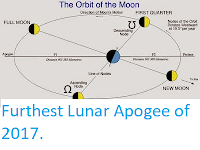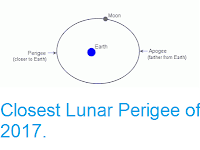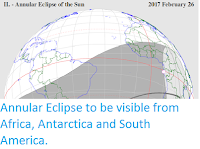A
total Lunar Eclipse will occur on 31 January 2018, starting slightly before 10.50 am GMT. It will be visible across much of East Asia and Australasia, as well as northwest North America, and the islands of the Pacific. Part of the
eclipse will be visible from remaining areas of Asia
and North America as well as east Africa, Eastern Europe, the islands of the Indian Ocean and Caribbean and northwest South America, although in these areas the Moon will either rise part
way through the eclipse, or set before it is complete.
Areas
from which the 31 January 2018 Lunar Eclipse will be visible. In the
white area the full extent of the eclipse will be visible, in the shaded
areas it will either begin before the Moon rises or end after the Moon
has set, while in the darkest area it will not be visible at all. HM Nautical Almanac Office.
The
Moon produces no light of its own, but 'shines' with reflected light
from the Sun. Thus at Full Moon the Moon is on the opposite side of the
Earth to the Sun, and its illuminated side is turned towards us, but at
New Moon the Moon is between the Earth and the Sun, so that its
illuminated side is turned away from us.
Lunar
eclipses occur when the Moon passes through the Earth's shadow. This
can only happen at Full Moon (unlike Solar Eclipses, which happen only
when the Moon passes between the Earth and the Sum, and therefore only
occur at New Moon), but does not happen every Lunar Month as the Sun,
Moon and Earth are not in a perfect, unwavering line, but rather both
the Earth and the Moon wobble slightly as they orbit their parent
bodies, rising above and sinking bellow the plane of the ecliptic (the
plane upon which they would all be in line every month).
Phases
of the Lunar Eclipse that will be seen on 31 January 2018. The times
are given in GMT, to the nearest 10th of a minute, thus 10.49.7
represents 36 seconds after 10.49 am GMT. HM Nautical Almanac Office.
See also...
Follow Sciency Thoughts on Facebook.








